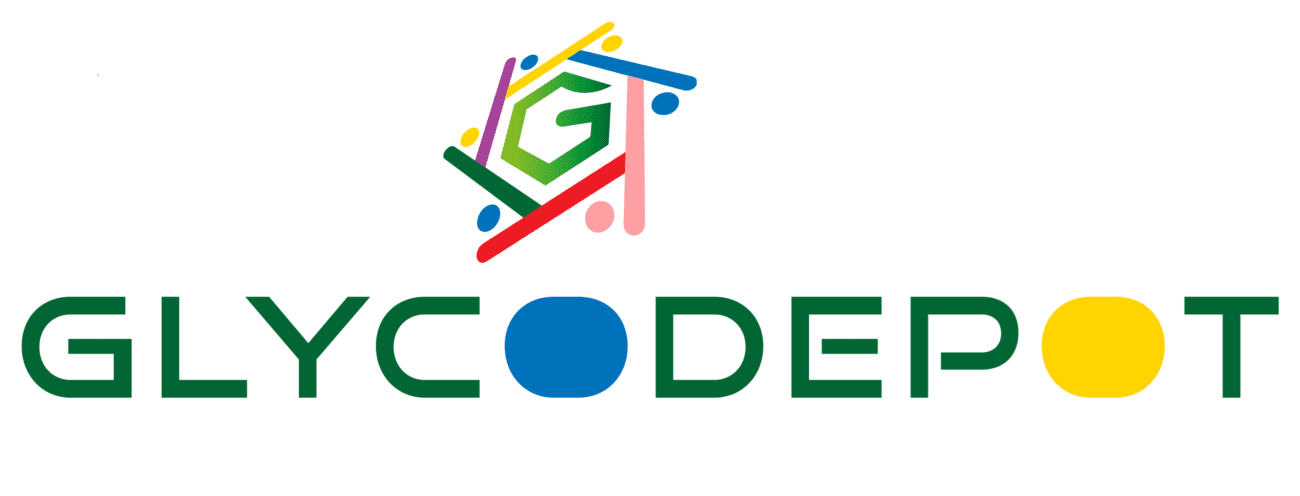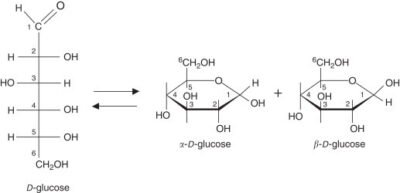Glycoprofiling: Unlocking the Secrets of Glycobiology
Introduction
Glycoprofiling is an important method of analysis in the fast-developing area of glycobiology. It concerns the characterization and study in detail of the structures of glycans, complex carbohydrates that bind to proteins and lipids by covalent bonds. Such glycan changes are much more than attractive; actually, they are essential in mediating biological processes, including cell-to-cell communication, regulation of the immune response, pathogen recognition, and disease progression of many diseases, including cancer, autoimmune diseases, and viral diseases.
As opposed to genetic or protein analysis, glycoprofiling reveals yet another layer of sophistication. Glycans are very varied and structurally compact, and the patterns of expression of glycans can vary with development, environmental responses, and pathologies. This qualifies glycoprofiling as an irreplaceable instrument in both basic studies and clinical diagnostics, which assists researchers and clinicians in understanding more about how cells behave and the actual pathology of the diseases. GlycoDepot provides academic, clinical, and pharmaceutical research with state-of-the-art glycoprofiling services and technologies. Our experience allows the researchers to accurately identify the structure, composition, and functional consequences of glycans in a sensitive and specific way. Through a more profound insight into the glycosylation patterns, we support the development of innovations across biomarker discovery, vaccine, therapeutic protein design, and personalized medicine.
Are you researching the role of glycosylation in cancer biology or trying to identify glycan-based biomarkers to carry out diagnostics? GlycoDepot’s comprehensive glycoprofiling services will give you the clarity and accuracy you need to push the fuzzy world of glycobiology to the next frontier.
What is Glycoprofiling?
Glycoprofiling, also known as glycan profiling, is a type of special analysis aimed at the specific analysis of glycans, complex sugars that are bound to proteins (glycoproteins) and lipids (glycolipids). Not only are these carbohydrate structures inactive substances, but they are also known to be important functional entities in many biological systems, such as immune regulation, signal transduction, protein folding, and cellular recognition. This is a profiling method that entails glycan extraction, identification, as well as structural characterization of glycan moiety using several techniques like mass spectrometry (MS), high-performance liquid chromatography (HPLC), capillary electrophoresis (CE), and lectin-based assays. Those tools enable highly sensitive and specific mapping of glycosylation patterns, providing access to the intricate glycome of a biological sample of interest. The feature that makes glycoprofiling very useful is that it can be used to detect small but significant changes in glycan structures, which are often associated with the appearance or development of disease.
To give an example, aberrant glycosylation is a marker of various cancers, autoimmune diseases, and infections. The identification of these changes allows the researchers to create more valid diagnostic tools and even find new biomarkers.
Besides diagnostics, glycoprofiling has extensive applications in the development of therapeutics. It also finds application in the quality control of biopharmaceuticals, in particular monoclonal antibodies and other glycoprotein-based drugs, where the glycosylation profile may impact drug efficacy, half-life, and immunogenicity. In addition, the efficient and safe design of glycan-based vaccines significantly depends on the accurate characterization of glycan structure. Conclusively, glycoprofiling yields a medium between carbohydrate and functional biology. It allows the scientific community to comprehend the effects of glycan changes within specific cells and how such research knowledge can be implemented as biomedical knowledge in the real world. With additions to the field, seven more glycomics emerge, and glycoprofiling is on the front line of this field, just like unlocking new depths into molecular biology and precision medicine.
Fig.1. Schematic representation of Glycoprofile.
Source: Adopted from mdpi.com
Core Methods Used in Glycoprofiling
Glycan structure is so complex that it needs sophisticated analytical methods to analyze glycan. Glycoprofiling uses a wide set of high-resolution, high-throughput, and highly sensitive analytical platforms to decode the glycome, the complete set of glycans in a bio-sample. In Eclipse’s advanced glycoprofiling applications, the main techniques to understand the glycosylation patterns and functions include those outlined herewith, each having its peculiar advantages in resolving the glycosylation patterns and functions.
- Mass Spectrometry (MS)
Mass spectrometry has long been regarded as the gold standard method of studying glycans because of its amazing sensitivity and the resolution of structural information. During glycoprofiling, the MS is exploited to identify the molecular weight and the composition of glycan structures. Widely used methods include MALDI-TOF (Matrix-Assisted Laser Desorption/Ionization Time-of-Flight) or ESI-MS (Electrospray Ionization Mass Spectrometry), and in many cases, digestion or chemical derivatization of glycans is performed in an attempt to eliminate the complexity of these samples. MS not only permits the identification of rare or low-abundant glycans but also provides glycan sequencing, or the ability to know the sequence of monosaccharide residues, branches, and the type of linkages. Even fragmentation data can be obtained by using sophisticated MS techniques like tandem MS (MS/MS), which can, in turn, assist the researcher in making inferences on the isomeric glycan structure that would otherwise go undifferentiated.
- High-Performance Liquid Chromatography (HPLC)
The other foundation of glycoprofiling is HPLC, which provides a powerful platform on which glycans can be separated using size, charge, hydrophobicity, and polarity. This is usually enhanced by fluorescent tagging the released glycans, usually using 2-aminobenzamide (2-AB) or 2-aminobenzoic acid (2-AA).
Depending upon the characteristics of the glycans of interest, there are different forms of HPLC methods:
- Glycans are separated using normal-phase HPLC (NP-HPLC), which is non-polar.
- Hydrophobic interactions can be used in the reverse-phase HPLC (RP-HPLC).
- Anion-exchange chromatography is focused on negatively charged sialylated glycans.
- Hydrophilic interaction chromatography (HILIC) is the best option to use when profiling large glycan pools.
HPLC in conjunction with mass spectrometry or fluorescence detection represents an effective method in the qualitative or quantitative analysis of glycans. In quality control of biopharma products, it is often applied in quality control processes, particularly in the validation of the glycosylation pattern of therapeutic antibodies and recombinant proteins.
- Lectin Microarrays
Lectin microarrays provide a semi-quantitative, high-throughput system of detecting glycans that capitalizes on the recognition between lectins, glycan-binding proteins, and a particular carbohydrate motif. By this technique, a panel of heterogeneous lectins is immobilized on a microarray slide, after which fluorescently labeled glycoproteins or glycoconjugates are added.
The array of distinct lectins binds to particular glycan epitopes, including sialic acids, fucoses, or galactoses, giving rise to a binding profile or so-called “glycan fingerprint” that indicates the whole glycosylation pattern of a sample. The method is particularly useful in the case of:
- Healthy versus diseased tissues comparative profiling.
- Discovery of biomarkers in cancer and autoimmune disease.
- Tracking the changes in glycosylation in cell differentiation or infection.
Lectin microarrays are non-destructive, require minimal sample preparation, and have the capability of processing dozens to hundreds of samples at a time. They are not as useful as MS or HPLC to obtain a detailed structural resolution, but they can screen and recognize patterns of large numbers of samples in a short period, thus being suitable for preliminary studies and clinical research.
Applications of Glycoprofiling:
Glycoprofiling has become an essential technique in a wide range of biomedical science, biotechnology, and pharmaceutical research and development. This approach allows more accurate study of the properties of glycans and their biological functions, thus playing a role in the game-changing diagnostics of disease, drug design, and immunological research. It is relevant to both basic and applied research, and it is an actionable source of insights relating to cellular processes, disease mechanisms, and therapeutic efficacy. Some of the most influential glycoprofiling uses in the current scientific and clinical environment are listed below.
- Biomarker Discovery:
Glycosylation is dynamic and may change dramatically during disease, such as in cancers, autoimmune, infectious, and neurodegenerative diseases. To find these slight but crucial alterations, glycoprofiling is used to identify glycan signatures related to diseases.
These distinctive glycan fingerprints have the potential to be strong biomarkers for:
- Prevention of the disease by catching it early, before the symptoms show.
- Stratification of patients during clinical trials.
- Tracking the treatment effect or weakening.
- Prognosis on chronic or progressive diseases.
Since glycans tend to be more representative of cellular conditions than either proteins or DNA could, glycoprofiling makes discovering biomarkers more sensitive and specific, and advances the scope of precision medicine.
Fig.9: Biomarker Discovery of Glycoprofiling
Source: Adapted from mdpi.com
Therapeutic Development
Glycoprofiling is an essential part of designing, manufacturing, and quality control of therapeutic biologics, especially monoclonal antibodies, hormones, cytokines, and other drugs based on glycoproteins. These molecules could be affected significantly in their:
- Biological activity.
- Pharmacokinetics and half-life.
- Stability.
- Immunogenicity.
As an example, some glycan motifs are linked to an improved antibody-dependent cellular cytotoxicity (ADCC), which is essential in cancer immunotherapy success. Glycoprofiling guarantees batch-to-batch consistency in glycosylation of a biopharmaceutical, an essential element in obtaining regulatory approval and patient safety. In addition, being able to engineer (or modify) glycosylation patterns provides new opportunities in glycoengineering, providing the annual potential to refine the performance and specific delivery characteristics of drugs.
Vaccine Research
Some of the glycan structures can be detected as antigens by the body’s immune system, and this is common to the structures observed on the surfaces of viruses and bacteria, as well as in parasites. This can be understood by the fact that glycoprofiling can be used to identify such antigenic glycan epitopes on which a designed development of:
- Glycoconjugate vaccines are a combination of carbohydrate antigens and carrier proteins.
- Chemical glycans.
- Tumor-associated carbohydrate antigens (TACA)-based cancer immunization.
Glycan patterns can provide new knowledge of pathogen-specific binding glycan patterns, which in turn enable researchers to develop better vaccines by using motifs in developing vaccines that have better responses that capitalize on natural infections, triggering stronger and long-lasting immune responses. Moreover, glycoprofiling can also be used to assess the immune response after immunization through the changes in glycosylation of a host. Through the convergence between glycobiology and translational medicine, glycoprofiling is at the edge of innovation in science. The development of disease mechanisms, in reducing the effectiveness of biological drugs, or in developing immunization methods, is still opening up the potential of modern science.
Why Choose GlycoDepot?
We unite the power of innovative technology, profound scientific knowledge, and client-orientedness to offer high-level glycoprofiling services at GlycoDepot. Our professional operators use powerful instruments such as mass spectrometry, HPLC, and lectin microarrays to deliver precise, high-resolution analysis of glycan to serve your research requirements. Regardless of whether you are developing disease biomarkers, glycosylation optimization of biologics, or investigating immune responses to develop vaccines, our all-embracing solutions will assist all parts of your project. At GlycoDepot, we are very serious about quality, accuracy, and teamwork, and can assist and enable you to convert complicated glycosylation data into scientific discoveries.
Conclusion
Glycoprofiling stands at the forefront of modern biomedical research, offering a gateway to understanding complex glycosylation patterns and their biological relevance. With tools like mass spectrometry, HPLC, and lectin arrays, researchers can gain detailed glycan insights that were previously inaccessible. Partner with GlycoDepot to explore the transformative power of glycomics in healthcare, diagnostics, and therapeutics.
References:
https://www.mdpi.com/2075-4418/12/11/2860
https://www.researchgate.net/figure/An-effective-glycoprofiling-of-an-antigen-biomarker





